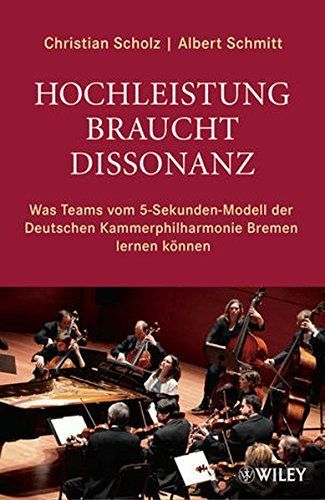
Hochleistung braucht Dissonanz Was Teams vom 5-Sekunden-Modell der Deutschen Kammerphilharmonie Bremen lernen können
Here Christian Scholz and Albert Schmitt discuss high–performance teams and in this context describe the story of the Deutsche Kammerphilharmonie Bremen, a leading international orchestra. Yet they are not concerned with the usual role of the conductor, who has his musicians perform like circus animals. This is a special orchestra, one that achieves first–class performance independently of the conductor and thus may serve as the basis for a high–performance team. The book unravels the organizational DNA as the generic genetic code for high–performance teams, in a manner that is useful for both practitioners and researchers. The fact that readers learn about an interesting orchestra is not only a pleasant side effect, but also authentic proof of the usefulness of the 5–sekond model presented here. This is the joining of five paired terms: "seconds" are not just the time interval, but rather the smallest distance between two notes, that sounds dissonant, yet at the same time demands progress and dynamics. If we take as one of the seconds the pair "perfection and adventure", this means both a continuous striving for perfection, while consciously agreeing to an adventure that may not result in perfection. Includes a CD with classical music –– as an example of the high performance of the Deutsche Kammerphilharmonie Bremen and to illustrate the 5 seconds.